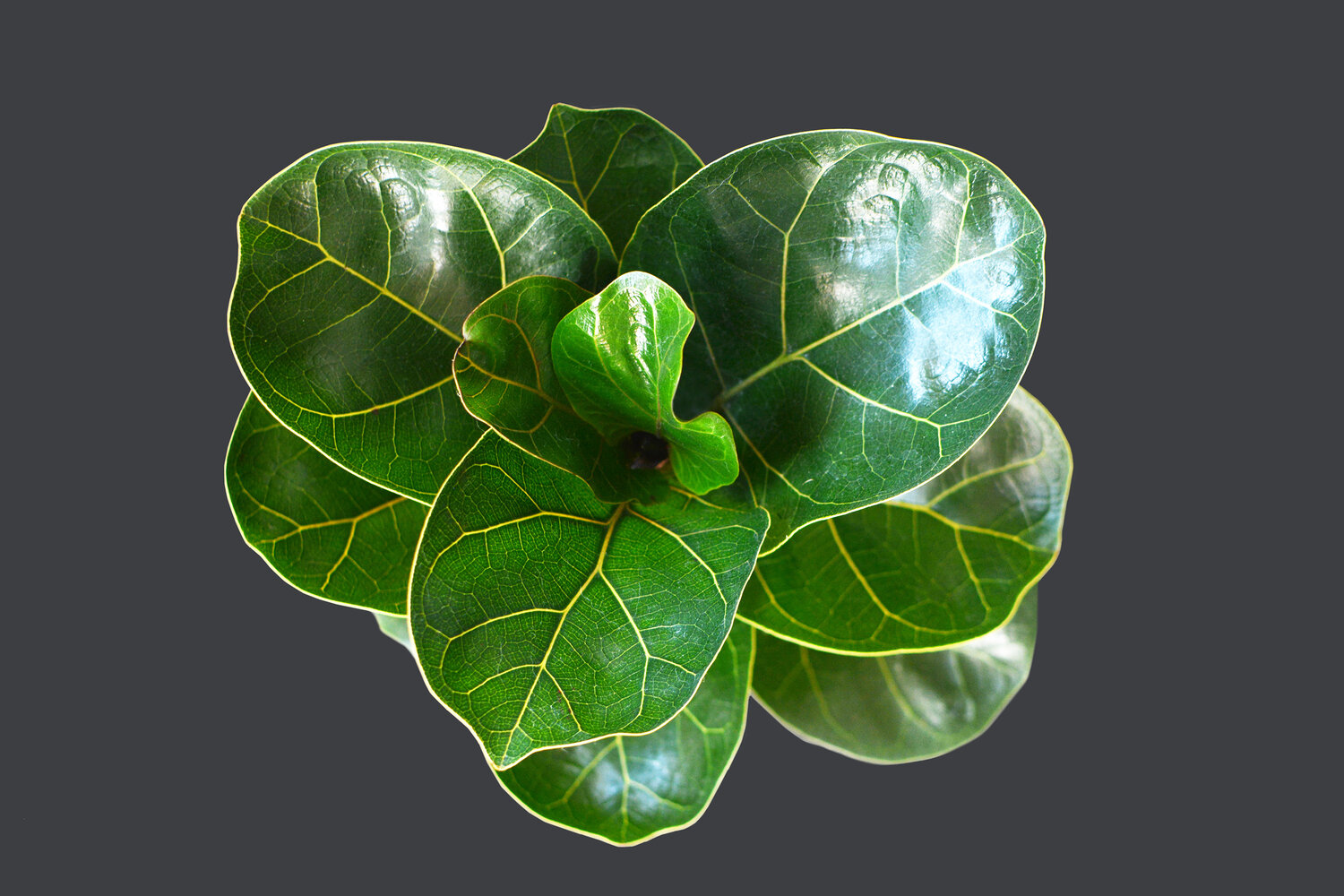Origin
Fiddle Leaf Fig trees are a rainforest plant originating from Western Africa, meaning they are well-accustomed to hot and humid conditions.
They get their name from their distinctive violin-shaped leaves, although the Latin name, Ficus lyrata, actually instead refers to the lyre - an Ancient Greek instrument that is also stringed but arguably looks more similar to a harp than a violin.
Although these trees can produce their namesake figs in their native environment, they are very unlikely to produce flowers or fruit when used as a houseplant.

Care
As a tropical plant, these trees like warmth and moisture and can sometimes be a little tricky to keep happy indoors. They like a humidity level of around 65, whereas unfortunately, most homes are a level of only around 10 or so. If your home isn't naturally kept humid, you can mist the leaves regularly to help encourage high humidity. Or, if you own many tropical plants, it may be worth investing in a humidifier.
Fiddle Leaf Figs can be quite sensitive. They really hate cold air, drafts, dusty leaves and being moved (especially during winter). Try to keep them away from any areas where they may be exposed to drafts, including your AC. Additionally, even if it may seem like a good idea to place them directly next to a heater to keep them warm, this can actually quickly cause your plant to dry up. They make beautiful decorative corner plants! Just make sure that they get enough light where you place them.
As Fiddle Leaf Fig leaves can grow considerably large, you should gently clean them every now and then to help keep their leaves dust-free. Finally, if you do have to move your Fiddle Leaf Fig, it is likely that, unfortunately, you will experience some leaf drop afterwards as your tree gets used to its new environment. Moving is stressful for most plants, and due to the Fiddle Leaf Fig's sensitivity, it can potentially take a while longer than your other plants for it to settle down again after a move. It may continue to look a little unhappy for a couple of weeks afterwards. If your tree continues to drop leaves after this time, it could be a sign that it is placed in incorrect light conditions or that it's getting the wrong amount of water.

Other
It is a myth that you can successfully propagate a full Fiddle Leaf Fig tree from a leaf. Although it is possible to produce a rooted leaf, this will not continue to grow after a point. If you wish to fully propagate your tree, you need to make sure the cutting also contains a length of the stem.
In the wild, Fiddle Leaf Fig trees can live up to a very impressive 70 years old! In houseplant form, they live a much shorter time - usually a maximum of around 20 years. However, it's possible to encourage them to survive longer even outside of the rainforest. For example, if you live in a suitable enough environment, then it is possible to plant them outdoors and encourage them to live almost double as long as when they're kept indoors!
They're also fast growers, and can grow truly huge when in their native environment: up to 50 feet! (around 15 meters)
Even indoors, though, they can grow pretty large quite quickly, so make sure you have enough space. Their mature height as a houseplant is closer to 10 feet (3 meters). If it does eventually outgrow your home, you can place it in a sheltered spot outside, provided that you live in a warm enough location.